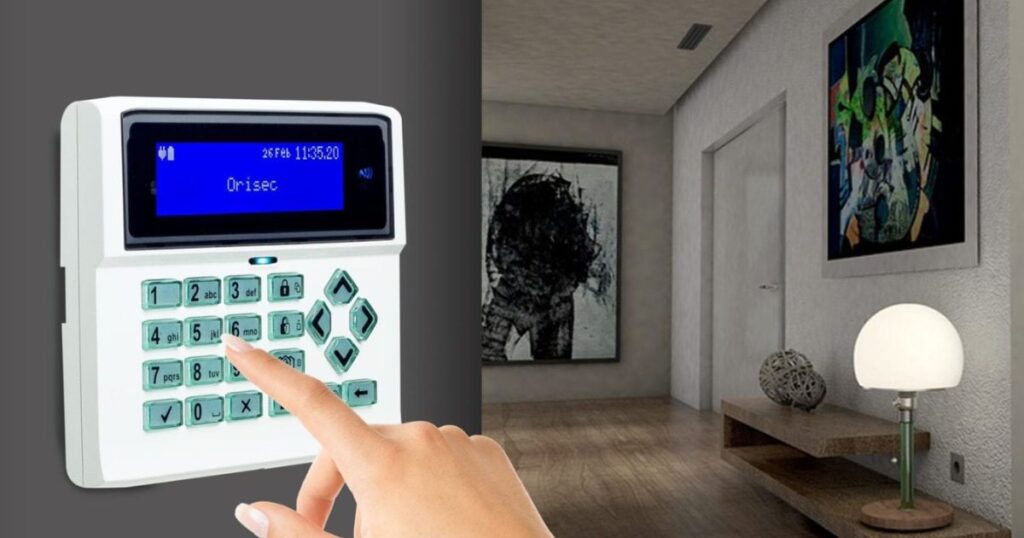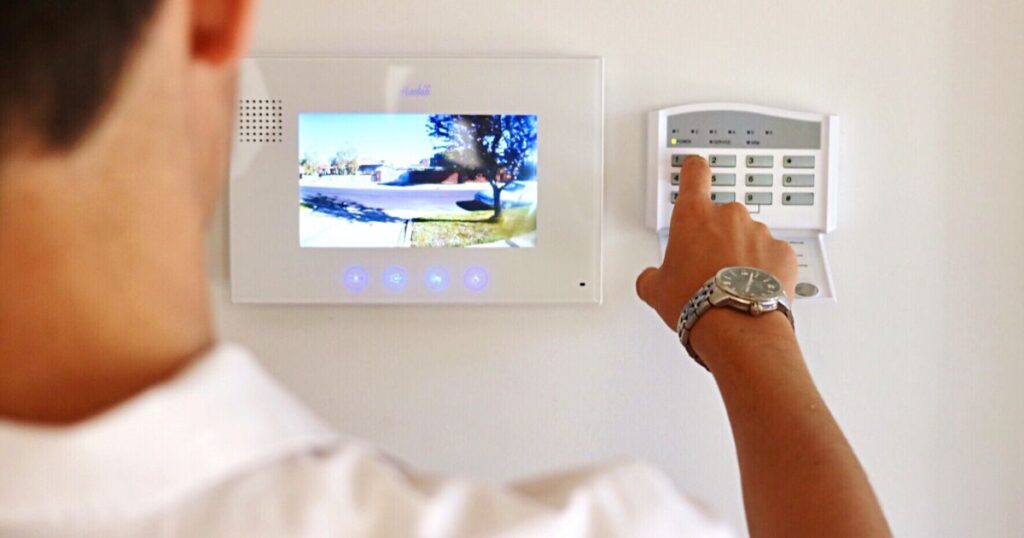A physical security measure for your home refers to tangible actions or devices designed to protect your property from intrusions or threats. Common examples include alarm systems, locks, and surveillance cameras.
Wondering what doesn’t count as a physical security measure? It’s crucial to distinguish between effective tools and those that offer no real protection. Misconceptions could leave your home vulnerable.
What’s a Security Measure for a Home?
A security measure for a home encompasses strategies and devices designed to protect the property from unauthorized access, damage, or theft. These measures aim to ensure the safety of residents and their belongings. Physical security measures include robust locks, such as deadbolts, which resist forced entry, and alarm systems that detect unauthorized movement and alert homeowners or authorities.
Surveillance cameras monitor the premises, deterring potential burglars and providing evidence in case of a crime. Additionally, security lighting illuminates dark areas, making it difficult for intruders to approach undetected. Reinforced doors and shatter-resistant windows further enhance security by increasing resistance to break-ins.
Technological solutions, like smart locks and home automation systems, provide remote control and monitoring, adding convenience and extra layers of protection. Procedural practices, such as regular inspections of security devices and participation in neighborhood watch programs, also play a critical role in maintaining a secure environment.
What’s Physical Security for Home?

Physical security for a home refers to tangible measures and practices aimed at protecting the property from physical threats and unauthorized access. It involves using hardware, structural elements, and environmental design to create a secure living environment.
Key components include access control measures like locks and security gates that restrict entry to authorized individuals only. Surveillance systems, such as cameras, help monitor activity and deter potential intruders. Barriers like fences and reinforced doors serve as physical obstacles that make it harder for criminals to gain access.
Environmental design, including well-maintained landscaping and strategic lighting, reduces hiding spots and enhances visibility. By combining these elements, homeowners can create a comprehensive physical security plan that effectively safeguards their property and ensures a safer living space.
Concept of Non-Physical Security Measures

Non-physical security measures focus on protecting information, systems, and processes rather than the physical aspects of a property. These measures aim to safeguard against cyber threats, fraud, and unauthorized access through digital means.
Key non-physical security measures include cybersecurity protocols, such as firewalls and antivirus software, which protect digital assets from online threats. Data encryption ensures that sensitive information remains confidential, even if intercepted.
Access controls, such as strong passwords and multi-factor authentication, prevent unauthorized users from accessing systems and data. Regular software updates and security training for individuals also play crucial roles in maintaining non-physical security.
Examples of Physical and Non-Physical Security Measures for Home
Physical Security Measures:
- Locks and Deadbolts: Secure doors and windows with high-quality locks to prevent unauthorized access.
- Alarm Systems: Install alarms and motion detectors to alert homeowners of potential intrusions.
- Surveillance Cameras: Use CCTV systems to monitor and record activity around the property.
- Security Lighting: Implement motion-sensor lights to illuminate dark areas and deter intruders.
- Reinforced Doors and Windows: Upgrade to solid-core doors and shatter-resistant glass for added protection.
Non-Physical Security Measures:
- Cybersecurity Software: Utilize firewalls, antivirus programs, and anti-malware tools to protect against digital threats.
- Data Encryption: Encrypt sensitive files and communications to ensure they remain secure from unauthorized access.
- Access Controls: Implement strong passwords and multi-factor authentication for online accounts and systems.
- Regular Software Updates: Keep all software and systems up-to-date to address vulnerabilities and enhance security.
- Security Awareness Training: Educate household members about best practices for online safety and recognizing phishing attempts.
Combining both physical and non-physical security measures creates a comprehensive approach to safeguarding your home and its assets.
Also Read : how old to work at home depot
Locks
Locks are fundamental components of home security, designed to prevent unauthorized access and protect your property. They come in various types, including deadbolts, knob locks, and electronic locks.
Deadbolts are highly effective, offering superior resistance to forced entry compared to standard knob locks. Electronic locks provide convenience with keyless entry options and can be programmed with unique codes for added security.
High-quality locks should meet industry standards and be regularly maintained to ensure their effectiveness. Upgrading to advanced locking mechanisms can enhance security, especially in high-risk areas or older properties where current locks may be outdated.
Insecure Windows and Doors
Insecure windows and doors are common vulnerabilities in home security. Windows and doors that lack proper locking mechanisms or are made of weak materials can be easily compromised by burglars. Ensuring windows have robust locks and using shatter-resistant glass can significantly improve security.
Doors should be solid-core and equipped with high-quality locks and reinforcing plates. Installing additional security features, such as window bars or security film, can further fortify these entry points. Regularly inspecting and upgrading your windows and doors helps maintain a strong security posture and prevents potential break-ins.
Insecure Door Hinges
Insecure door hinges can pose a significant security risk, as they may allow intruders to force open doors with relative ease. Hinges that are not properly reinforced or are exposed on the exterior side of the door can be particularly vulnerable.
To enhance security, use heavy-duty hinges with non-removable pins or security screws that prevent tampering. Additionally, consider installing hinge protectors or reinforcing plates to strengthen the door frame.
Regular maintenance and inspections of door hinges ensure they remain secure and effective in preventing unauthorized access. Addressing these potential weaknesses helps create a more secure and resilient entryway.
Missing or Damaged Screens
Overview
Missing or damaged screens in windows and doors can compromise your home’s security and comfort. Screens are essential for keeping out insects and debris while allowing fresh air to circulate.
Security Implications
When screens are missing or damaged, they can provide an easy entry point for intruders. Burglars may exploit these vulnerabilities to gain access to your home, especially if other security measures are lacking.
Maintenance Tips
Regularly inspect screens for tears, holes, or loose frames. Repair or replace damaged screens promptly to maintain security and functionality. Installing high-quality, durable screens can help prevent future issues and enhance overall home security.
Prevention
Consider using reinforced screens or security window film for added protection. Regular maintenance and timely repairs are crucial for ensuring that screens remain effective in safeguarding your home.
Poor Landscaping and Lighting

Poor landscaping and lighting can significantly impact home security. Overgrown bushes and poorly maintained yards offer potential hiding spots for intruders, making it easier for them to approach undetected.
Similarly, inadequate outdoor lighting around entry points and pathways increases the risk of break ins, as darkness can conceal suspicious activity. To enhance security, keep landscaping trimmed and well-maintained to eliminate hiding spots.
Install motion-sensor lights and ensure all exterior areas are well-lit to deter potential criminals. Effective lighting and neat landscaping not only improve the safety of your home but also create a welcoming and secure environment. Regular upkeep in these areas is crucial for maintaining a robust defense against unauthorized access.
Conclusion:
Addressing poor landscaping and inadequate lighting is essential for enhancing home security. By maintaining well-trimmed yards and installing effective lighting, you eliminate potential hiding spots and increase visibility around your property. Regular upkeep in these areas not only deters intruders but also ensures a safer and more secure living environment. Prioritizing these measures strengthens your overall home defense and promotes peace of mind.
People also ask
Which of the following is not a physical security measure?
A cybersecurity software is not a physical security measure.
What are the 4 types of physical security?
The four types are access control, surveillance, physical barriers, and environmental design.
Which is not an example of physical security?
A password protection system is not an example of physical security.
Which of the following is not a security measure?
A personal diary is not considered a security measure.







